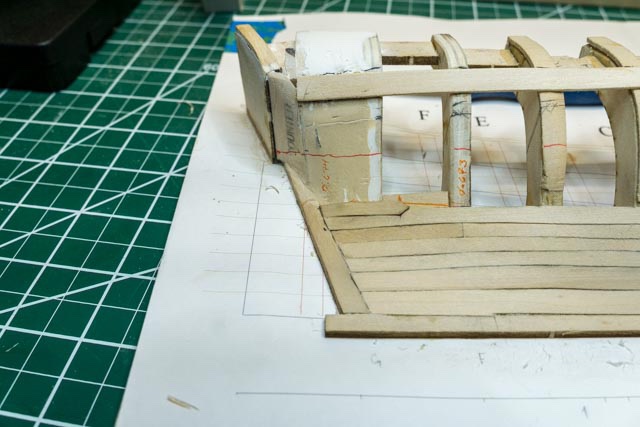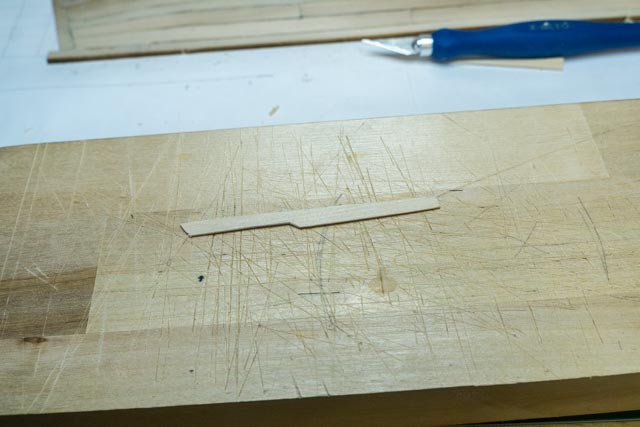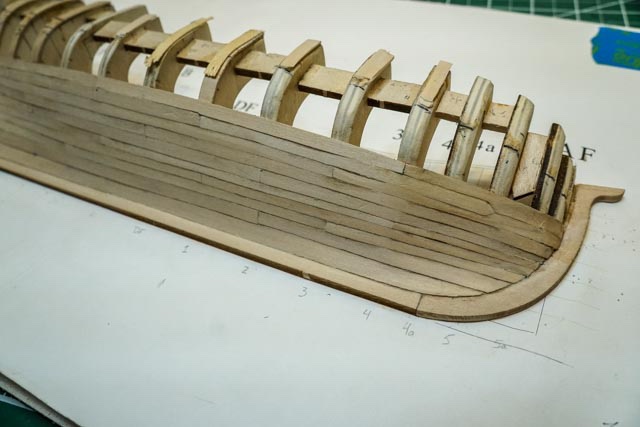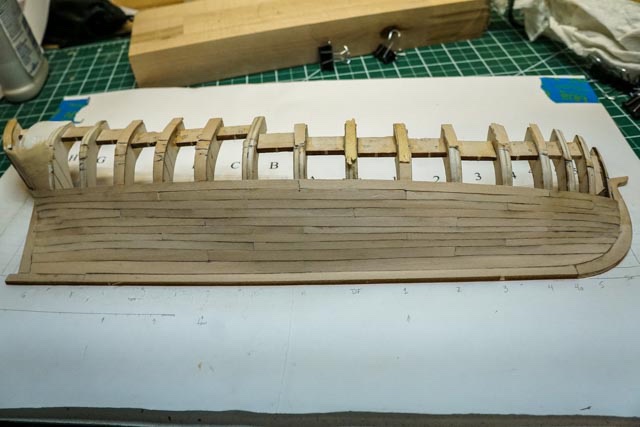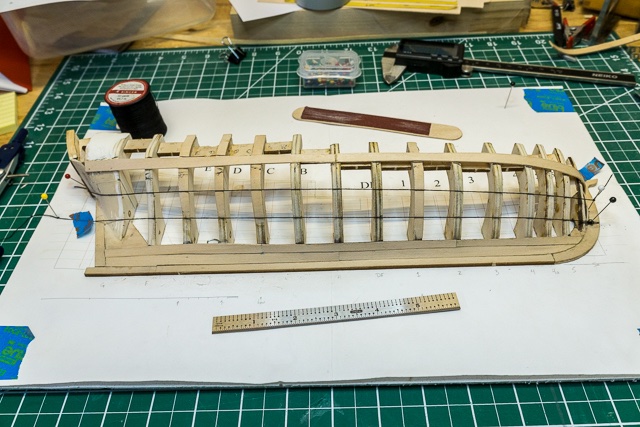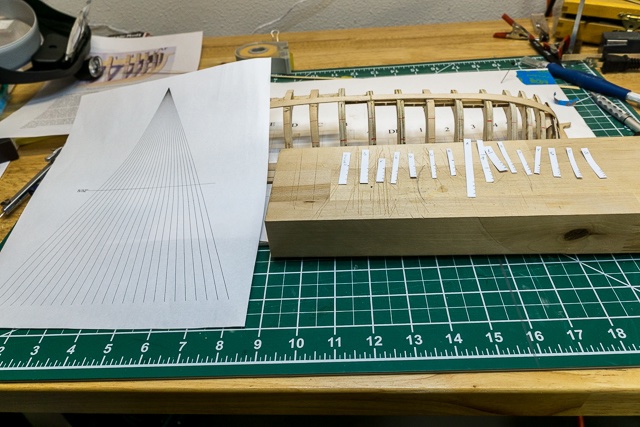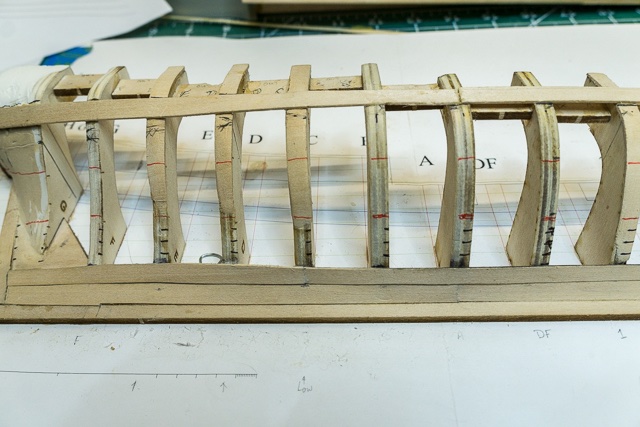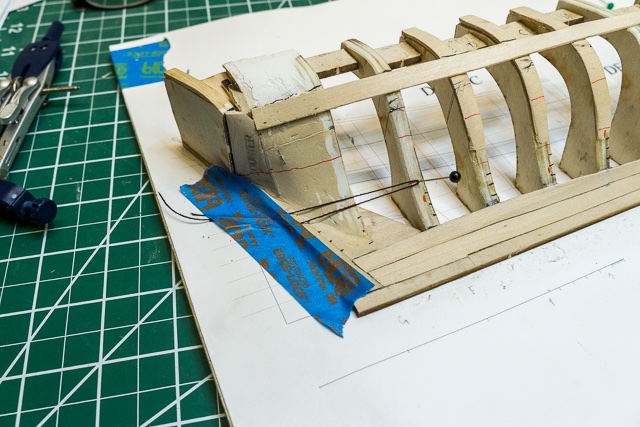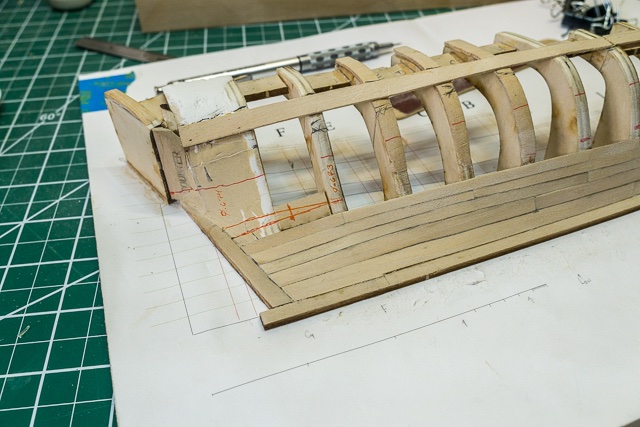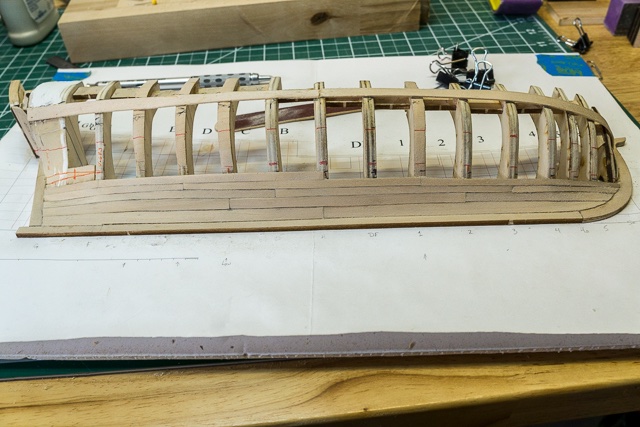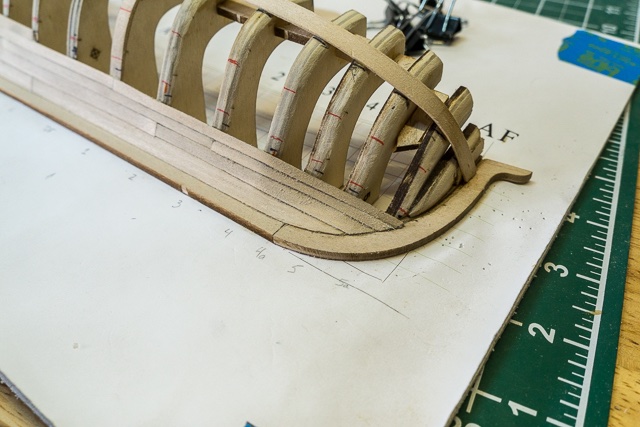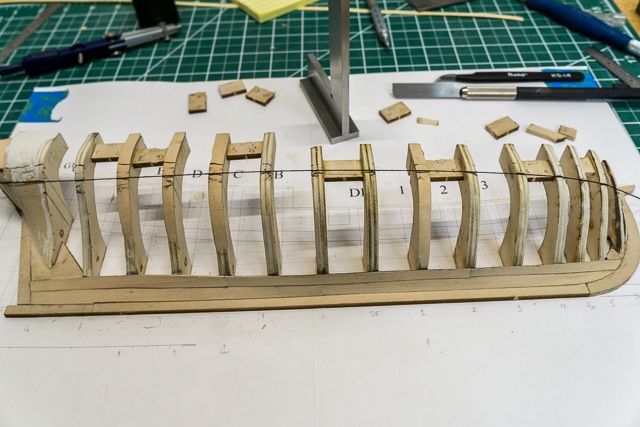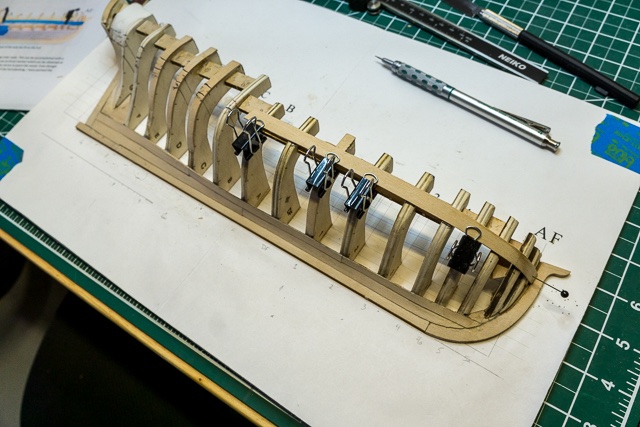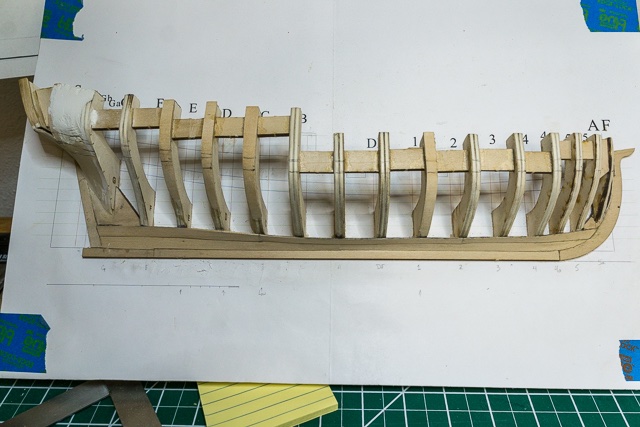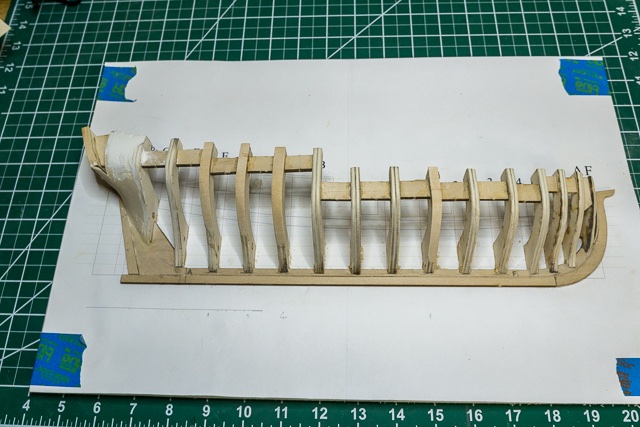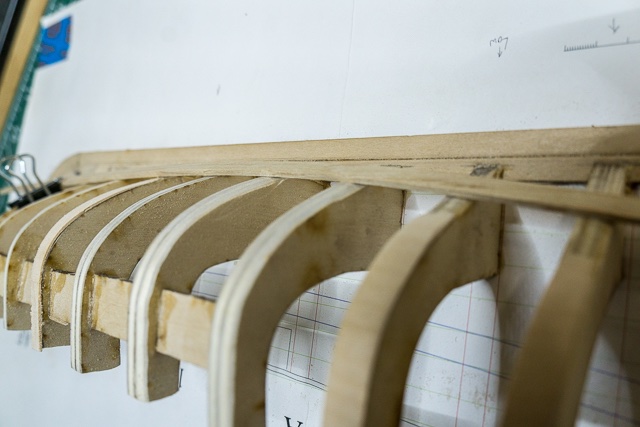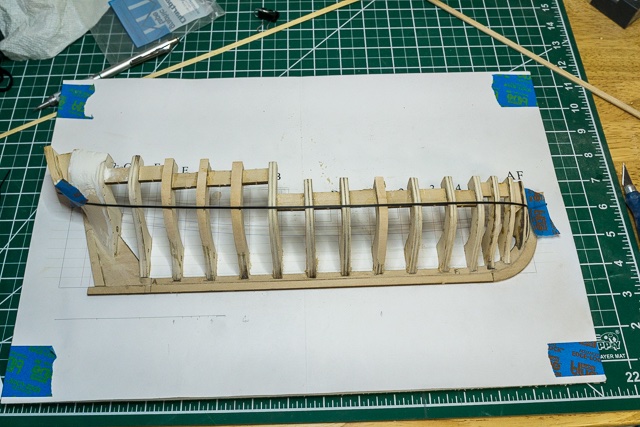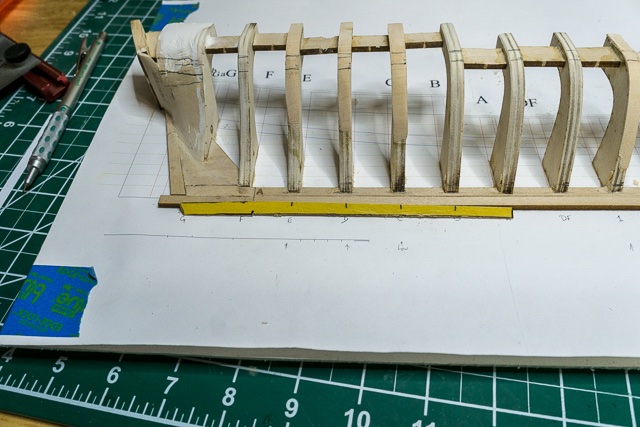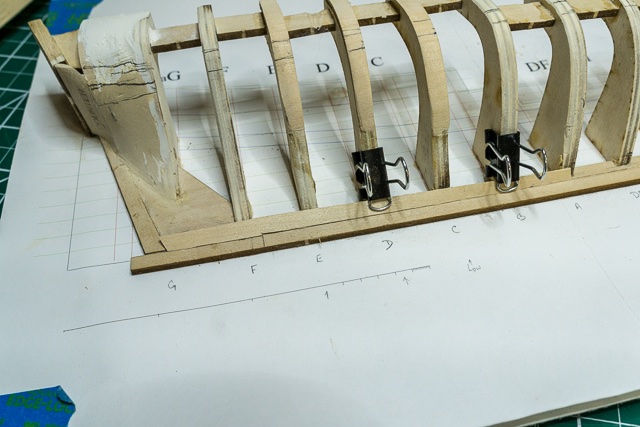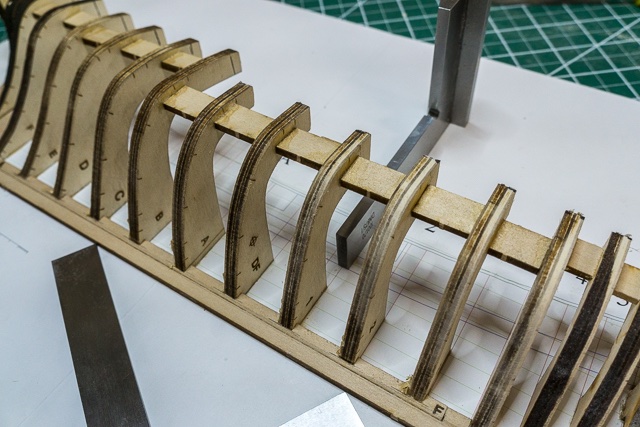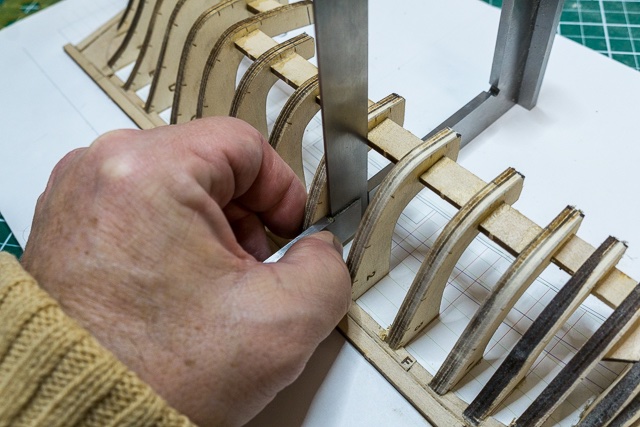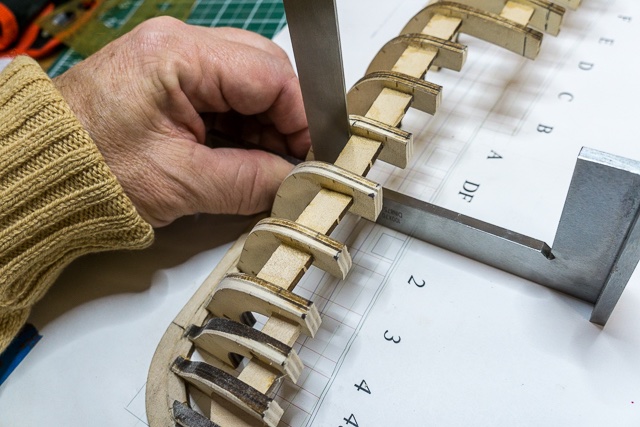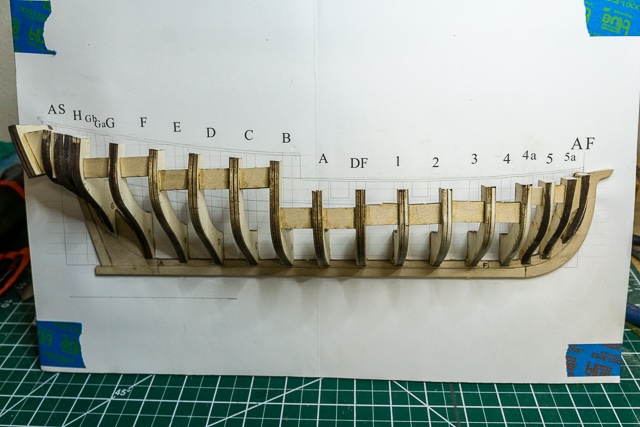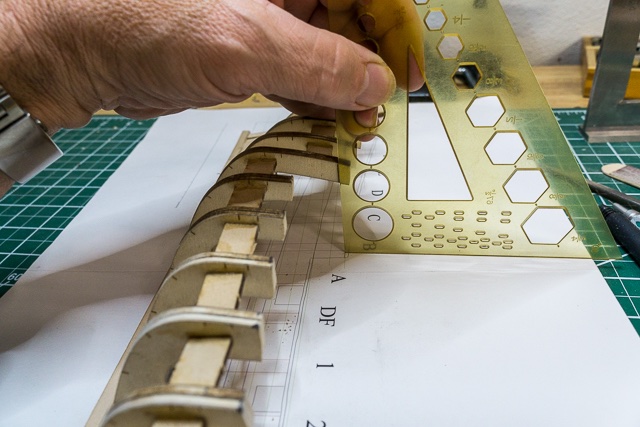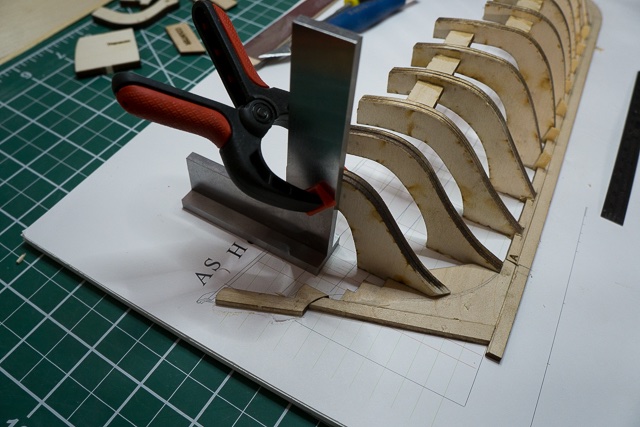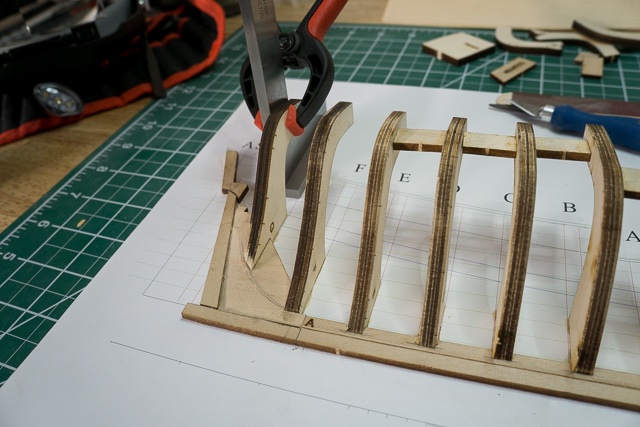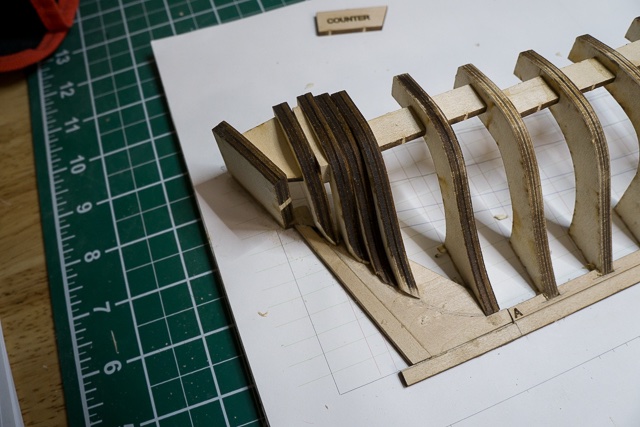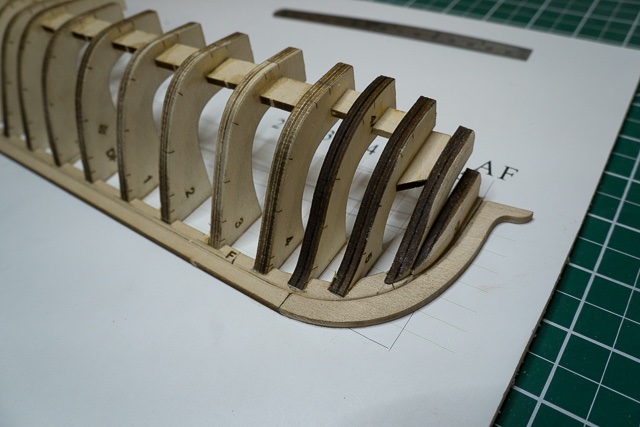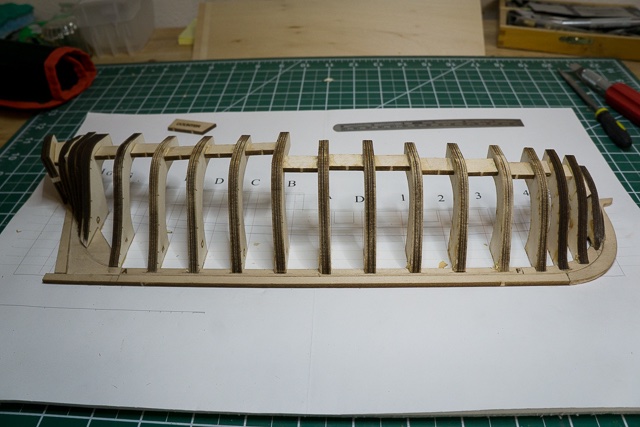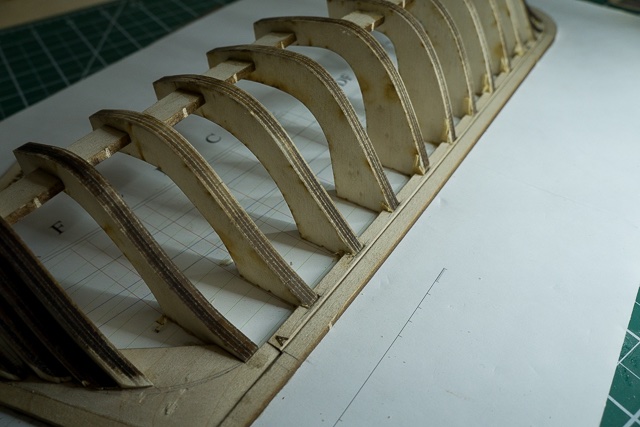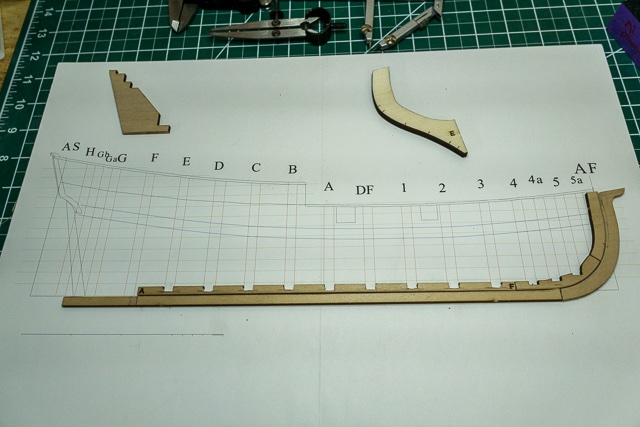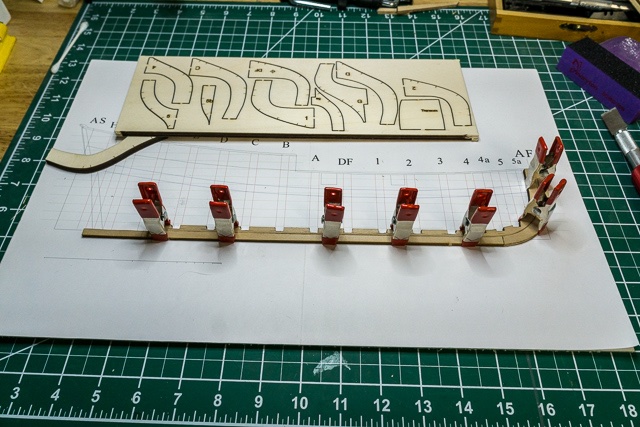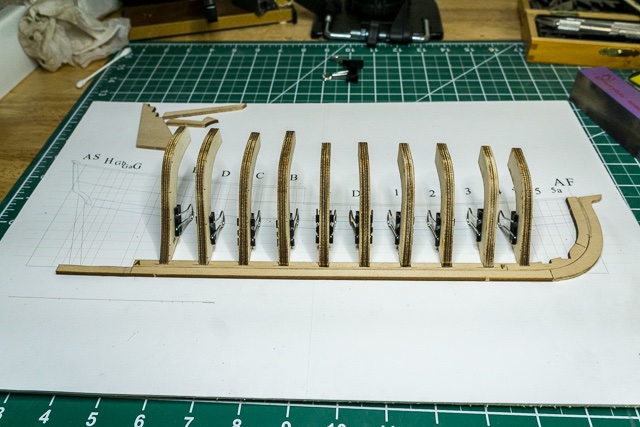
Dgerth
NRG Member-
Posts
25 -
Joined
-
Last visited
About Dgerth

- Birthday 11/16/1952
Profile Information
-
Gender
Male
-
Location
Gearhart, OR
-
Interests
photography, music, model shipbuilding, cheesemaking
Recent Profile Visitors
The recent visitors block is disabled and is not being shown to other users.
-
 GrandpaPhil reacted to a post in a topic:
Harvey 1847 by DGerth - Artesania Latina - 1:50 - Baltimore Clipper
GrandpaPhil reacted to a post in a topic:
Harvey 1847 by DGerth - Artesania Latina - 1:50 - Baltimore Clipper
-
 GrandpaPhil reacted to a post in a topic:
Harvey 1847 by DGerth - Artesania Latina - 1:50 - Baltimore Clipper
GrandpaPhil reacted to a post in a topic:
Harvey 1847 by DGerth - Artesania Latina - 1:50 - Baltimore Clipper
-
 Nirvana reacted to a post in a topic:
Half Hull Planking Kit by DGerth - NRG - 1:48
Nirvana reacted to a post in a topic:
Half Hull Planking Kit by DGerth - NRG - 1:48
-
Sorry for the long delay, been otherwise occupied. I have not, literally or figuratively, given up the ship. Got the stealer and drop planks in, they weren't as hard as I had feared.After laying out the stealer, it went in per plan Next I cut the upper plank and glued it in place. Sorry, but no pics of the drop plank up front. I continued on to complete the middle planking belt. Obviously, I have some sanding to do! Ignore the upper area, I have been doing some reconstruction there after realizing what a lousy job I did fairing the bulkheads. Mostly gluing on extra wood so I can sand it down to where it should be. That's next, before I start the upper belt. After I get things straightened out, I'll lay out the upper belt, get that in, place the wale, and move on from there. I think my biggest frustration so far has been cutting the planks to the correct angle to fit into the stem rabbet. I finally settled on making a paper template for that end of each plank and carefully sanding it to fit. Too bad it took me so long to figure that out. I am seriously thinking about buying another one of these kits, and using what I've learned to make it better! To be continued... dan
- 24 replies
-
 EricWilliamMarshall reacted to a post in a topic:
Half Hull Planking Kit by DGerth - NRG - 1:48
EricWilliamMarshall reacted to a post in a topic:
Half Hull Planking Kit by DGerth - NRG - 1:48
-
 EricWilliamMarshall reacted to a post in a topic:
Half Hull Planking Kit by DGerth - NRG - 1:48
EricWilliamMarshall reacted to a post in a topic:
Half Hull Planking Kit by DGerth - NRG - 1:48
-
 EricWilliamMarshall reacted to a post in a topic:
Half Hull Planking Kit by DGerth - NRG - 1:48
EricWilliamMarshall reacted to a post in a topic:
Half Hull Planking Kit by DGerth - NRG - 1:48
-
 EricWilliamMarshall reacted to a post in a topic:
Half Hull Planking Kit by DGerth - NRG - 1:48
EricWilliamMarshall reacted to a post in a topic:
Half Hull Planking Kit by DGerth - NRG - 1:48
-
 EricWilliamMarshall reacted to a post in a topic:
Half Hull Planking Kit by DGerth - NRG - 1:48
EricWilliamMarshall reacted to a post in a topic:
Half Hull Planking Kit by DGerth - NRG - 1:48
-
 EricWilliamMarshall reacted to a post in a topic:
Half Hull Planking Kit by DGerth - NRG - 1:48
EricWilliamMarshall reacted to a post in a topic:
Half Hull Planking Kit by DGerth - NRG - 1:48
-
 EricWilliamMarshall reacted to a post in a topic:
Half Hull Planking Kit by DGerth - NRG - 1:48
EricWilliamMarshall reacted to a post in a topic:
Half Hull Planking Kit by DGerth - NRG - 1:48
-
Finally back to work! I've been busy, but have been sneaking in half hour sessions every now and then. I've marked the planking belts, lined out the planks using a planking fan and tic strips, and have been planking the lower belt. It takes me about 15 - 20 minutes to make a plank. Of course, I have made some mistakes and had to redo about 20% at first, but I'm getting better! Marking the belts. The thread worked much better than the tape! My tic strips and planking fan. Plank width marked out on each bulkhead. The red marks are the belt markers. Laying out the location for the stealer. I added a brace to give some gluing surface as indicated in the instructions, then marked the half width point as the front end of the stealer. I also measured the width of the middle belt at bulkhead F and the sternpost. They were pretty close to the same width, despite all my super-accurate marking! I was also relieved to see that I have 5 rows in the lower belt, as does Toni. Getting close, one and one-half plan runs to go. Fitting pretty good at the stem. The dust is from a light pass with some sandpaper. Nowhere near finished sanding, just wanted to see how the pencil lines would show up and clean off a little glue residue. Will finish up the lower belt, then start working on the stealer. To be continued... Dan
- 24 replies
-
Back to work (had some honey-dos to take care of).... I removed some of the stiffeners and remarked the wale location on the bulkheads. Lesson learned - I don't think I'll worry about completely removing the laser char; the glue I used (Elmer's carpenter glue) was tenacious. Took quite a lot to remove the stiffeners! I then marked the run with black thread. Worked much better than the chart tape I had previously used. Marks are still pretty ugly, but the thread helps greatly. I transferred the bulkhead positions and marks to Tamiya tape and connected the dots with a ship's curve. My father was a draftsman and I inherited some of his drafting equipment - Never thought I'd use it! I used a compass set at the the plan width of 0.28" to mark a parallel for the upper line, cut it out, and sanded the edges. I decided to attach the wale prior to starting the planking. My rationale was that it would provide a much more clear line to work from. Since the bow is an extreme curve, I soaked it and clamped it in place overnight. I still need to do some final sanding on it, but it shouldn't take much. I'll make the stern wale next using the same procedure. I did save the tapes to make the second layer of the wale planks! Nirvana - thanks for the pencil recommendation! I found out one of the reasons mine smeared so much is that it was designed to do that when rubbed with a wet cloth - which is what I was doing to clean up some glue squeeze-out. Duh. to be continued... Dan
- 24 replies
-
Thanks Nirvana, I can confirm that! I’m going to try some different pencils. I see a lot of folks use plain old #2 pencils, will try that as well. I know for a fact I’m not going to use a sharpie - don’t ask me how I know 😉
- 24 replies
-
Progress tonight, finished fitting the garboard and broad strakes. It was not as bad as I feared (fairing was more difficult) Looks pretty dirty right now, should clean up after a light sanding (it looks better in person). I am planning to paint the keel, stem, sternpost, wale, trim and rails black. I'm using a graphite drawing pencil to simulate the caulk between planks, and it does tend to "spread out" a little. The planks actually fit pretty tight; I'm beveling the bottom of each new plank. As an experiment, I fit a plank before and after beveling. Beveling makes a significant improvement in the fit. Now comes the fun - laying out the planking belts. I have been using 1/16" graphic tape as a layout aid, but I don't like it. It doesn't stick, and thus my lines are sloppy. I am going to switch to black thread, remark the wale, and use it to lay out the planking bands. I'll use pins to stretch it out over the hull. to be continued... Dan
- 24 replies
-
Back to work! I believe I have faired the hull pretty darned close - even though I had to rebuild a few bulwarks and use some filler at the stern. The stern area looks rough, but it's not that bad. Ugh, what a mess! I have marked the wale location, and upon closer examination, I think I have the counter angled incorrectly. The stern is one area that I wish the instructions were a little more clear: 1 Correct orientation of the Transom, 2 Correct angle for the counter After checking the anticipated plank ends, I think I can work with this. I'll check again - I'm not afraid to disassemble and reassemble if necessary. Started the garboard plank: Fits pretty well! On to the fore garboard, then the broad strake. to be continued! Dan
- 24 replies
-
Well, no photos, just a short update. I have found out that I really stink at fairing. After several hours of sanding, I have had to repair numerous errors - mostly oversanding. I had to step away for a bit in frustration, but have gotten back on the horse and am making some progress. I have learned a lot, which is the whole point I guess! 🙄
- 24 replies
-
Nirvana: No, I took it in the spirit it was intended, got a little laugh out of it. It is impressive that they were able to deliver it in such a short time frame. I agree, this should be up there as a must do for anyone starting out - and as a nice refresher for others! Take care, Dan
- 24 replies
-
I got the sheer line sanded in and faired. For the bulk sanding I used my Dremel with a sanding drum on the flexible shaft, and worked it very carefully. I was glad I had the sheer lines on the sides of the bulkheads to act as a guide. When I got very close, I switched to a sanding stick. For final sanding, I used a sanding stick with only one-half covered in sandpaper. I could use it to check the fairing as I went, with the front half sanding the next bulkhead(s) and the back half serving as a batten to maintain the line without sanding. Bukhead "A" will need a little extending, but not a whole lot. I was thinking about the wale marking problem, and came up with an idea that should help with just about all the problem areas. It involves using two machinist's squares as follows: Bring one in from the front and align with the wale line on the plan Slide the other one in from the keel side until they meet: Keep it up against the bulkhead. The other square will ensure it stays plumb. And now mark the wale position on the bulkhead (of course, after the fairing is complete!) And now onto the fairing....sand, sand, sand, etc. Stay safe! Oh! - Nirvana - did you get your kit? Dan
- 24 replies
-
Glad to see you pulled the trigger; you will have fun. It's not a paint-by-numbers kit, you will need to think through some steps. I recommend reading through Toni's log many times, as well as the instructions. I would probably do some steps out of order, like transferring the wale and sheer lines before adding the stiffeners. Make sure you deepen the slots for the bulkheads enough to make a smooth transition to the rabbet. Cut those slots after gluing to the base, but be very careful. They won't leave much on the keelson after you're done. Stay safe! Dan
- 24 replies
-
Transferring the sheer line. Instead of using the machinist's square, I used a drafting triangle. I liked it because it was easier to maneuver in the tight spaces, easier to judge the alignment with the line on the plans, and I could see through it. I'm thinking about using an Xacto #13 saw blade to cut the majority of the waste, and use a sanding stick for final adjustment. Cut down on sanding dust also! It looks like I was a little overzealous in sanding one of the bulkheads, so I will graft an extension on and sand it back a little more carefully. Then, on to fairing! To be continued... Dan
- 24 replies
-
Thanks Bruce, and Nirvana, I understand. This is really a great little kit, and not only for the planking. The whole exercise of cutting the rabbet and seeing how it works together with the bulkheads is eye-opening for someone like me with little building experience. I’m toying with the idea of removing one of the forward stiffeners to let me get a wale location mark, then re-installing. Shouldn’t be too hard, and lesson learned. Dan to be continued...
- 24 replies
-
Back to work. I've actually been working on the kit, just haven't had time to post. Got the bulkheads glued in, looking pretty good so far. everything appears square. Stern bulkheads completed. I decided to attach the transom now. Will obviously need to do quite a bit of fairing at the deadwood/keel junctions. As I feared, cutting the slots in the fore keelson while glued caused some damage to the paper/foam substrate. I don't think I cut them deep enough to provide a smooth transition into the rabbet. Will work to fix that during the fairing. Here she is, ready to start the fairing. I think I will have a little trouble transferring the wales to the bulkheads as the stiffeners are directly over the lines at the bow. Should have anticipated that, will try to mark as many as I can and eyeball the line with tape. To be continued...
- 24 replies
-
Update on the build. I've got the rabbet cut, and the parts glued together and to the paper. I used a needle file for the 45 degree sections, and a razor blade to carve the 90 degree sections. I deepened the slots by drawing a guide line 1/16th" below the end of the slot, then used an Xacto chisel to cut the sides. The bottoms I cut out with a #11 blade. I deviated from the instructions by deepening the slots prior to gluing the parts to the board. In retrospect, I probably could have done it after gluing, but having the keelson separate gave me better access for squaring the bottom. I still need to deepen the slots in the fore keelson, so I'll have both methods under my belt. I understand why the slots weren't cut to full depth - I had to be extremely careful not to break the keelson! Rabbet cut, parts ready to glue. They don't look tight, but I kept bumping them out of alignment! Parts glued, getting ready to cut out and sand the bulkheads. Bulkheads E through 4 sanded, test fitting in slots. This took me about 50 minutes. Some bulkheads are pretty loose, so I will need to shim. I'm also thinking of reinforcing the keelson by laminating a strip between the bulkheads to provide more gluing surface. That's all for now!
- 24 replies
About us
Modelshipworld - Advancing Ship Modeling through Research
SSL Secured
Your security is important for us so this Website is SSL-Secured
NRG Mailing Address
Nautical Research Guild
237 South Lincoln Street
Westmont IL, 60559-1917
Model Ship World ® and the MSW logo are Registered Trademarks, and belong to the Nautical Research Guild (United States Patent and Trademark Office: No. 6,929,264 & No. 6,929,274, registered Dec. 20, 2022)
Helpful Links
About the NRG
If you enjoy building ship models that are historically accurate as well as beautiful, then The Nautical Research Guild (NRG) is just right for you.
The Guild is a non-profit educational organization whose mission is to “Advance Ship Modeling Through Research”. We provide support to our members in their efforts to raise the quality of their model ships.
The Nautical Research Guild has published our world-renowned quarterly magazine, The Nautical Research Journal, since 1955. The pages of the Journal are full of articles by accomplished ship modelers who show you how they create those exquisite details on their models, and by maritime historians who show you the correct details to build. The Journal is available in both print and digital editions. Go to the NRG web site (www.thenrg.org) to download a complimentary digital copy of the Journal. The NRG also publishes plan sets, books and compilations of back issues of the Journal and the former Ships in Scale and Model Ship Builder magazines.

